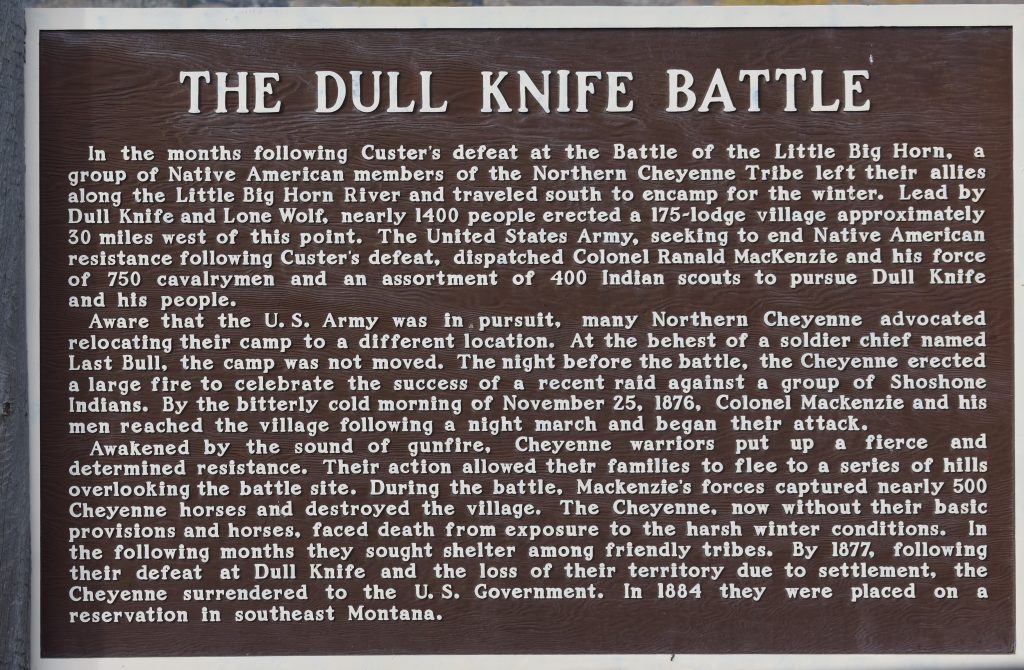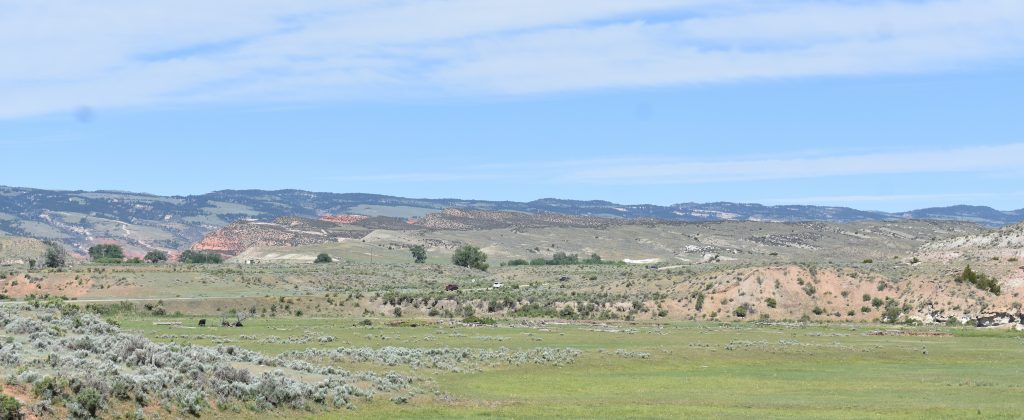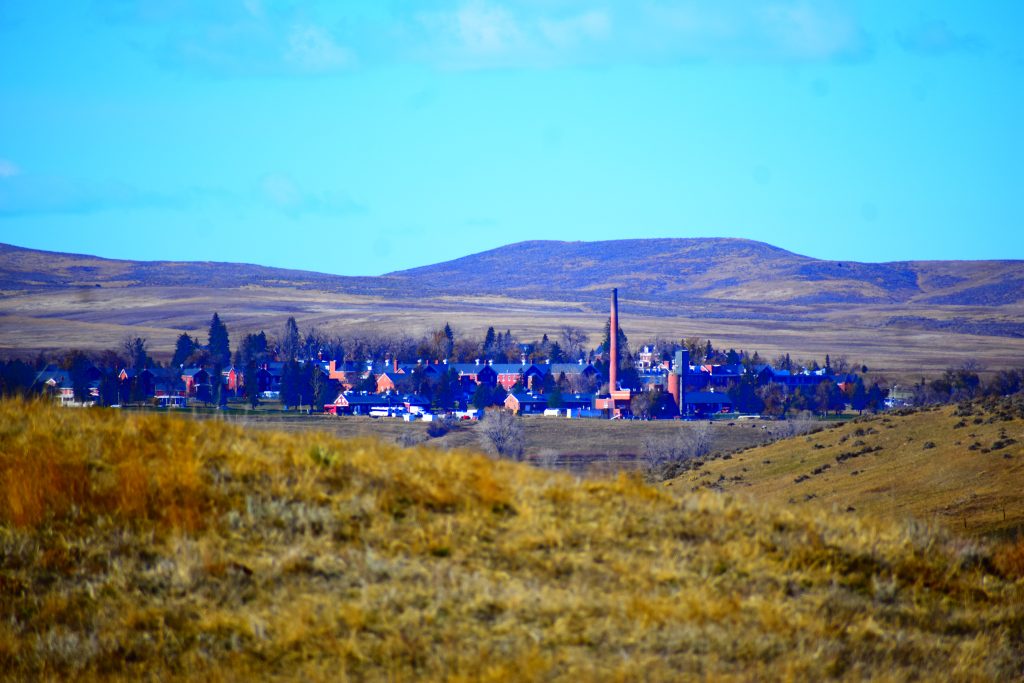News
Fort Macknezie Named After Military Hero
Published
2 years agoon
By
cvannoy
Although Congress had differing ideas on what to name the newly built fort in Sheridan, Wyoming, the military had no problem deciding who should be honored, General Ranald Mackenzie, who fought with distinction in the Civil War as well as many Indian engagements in Texas, Montana and Wyoming.
Thomas Hatch, VA historian who compiled much of the information used in this article, said about Mackenzie. “Ranald Mackenzie… his name is spelled with an a…. was quite a character…. If you ask people in Sheridan, ‘who was Ranald Mackenzie?’ Pretty much no clue. But in Texas he is ‘The Guy.’”
This is the story of Ranald Mackenzie.
Mackenzie had little direction as a young man until he applied to and was accepted into the West Point class of 1862. The Civil War began in 1861, and Mackenzie saw several of his classmates resign their commissions and sign up to fight in the war.
Mackenzie continued his studies and graduated at the top of his class. The year before, George Armstrong Custer graduated near the bottom of his class at West Point. Undoubtedly the two men knew each other or at least knew of each other. When Mackenzie graduated in 1862, he was commissioned a Second Lieutenant in the Union army. He was immediately sent to report to the Northern Virginia campaign.
Mackenzie fought in the battle of Manasseh, or the Second Bull Run, where he was shot in back. “There was a big stink that he was running away,” Hatch said. “But he was actually functioning as a messenger for his commanding officer. He was waylaid and was trying to escape from the confederate troops when he was wounded.” His mother came to take him home to recuperate.
Once he healed he received a promotion to first lieutenant. By March of 1865, he rose to the rank of brigadier general of the 6th Army Brigade. He was only 26 years old and became one of the youngest generals in the Civil War. As well as Manasseh, Mackenzie fought at Antietam, Gettysburg, Cedar Creek, Appomattox as well as other engagements. He was wounded seven times during the conflict. In his third battle in the Civil War an exploding shell took off two fingers. After that the Indians he encountered called him ‘Bad Hand.’
Hatch said that Mackenzie was in charge of the cavalry chasing General Robert E. Lee’s forces that ended up at the courthouse at Appomattox, where Lee surrendered to Grant. Mackenzie was also in charge of rounding up other Confederate cavalry units. By the end of the Civil War, he was highest ranking officer from the West Point class of 1862. After the war he was reverted back to his original rank, which was by then the rank of captain. He was described by General Ulysses S. Grant as the Union’s most promising young officer.
The Army decided to restructure the military in 1865. Mackenzie was given the rank of colonel, and was put in command of the 41st division, the first colored division. They were assigned to Texas and became a very effective unit.
Hatch continued, “In Texas, Mackenzie becomes the Army’s go-to guy for their Indian problems.” He said that the Indian forces were in league with Mexican ‘gangs’. The Indians would come into Texas to raid, steal women, pillage and then head back into Mexico to sell their plunder to Mexican bandits. The US Military could only follow them as far as the Mexican border. “General Sheridan calls Mackenzie in to put a stop to the raiding. Ranald said, ‘I’ll take care of it. If you’re cool with it, I’m good. I’ll take care of it.’ Sheridan agreed to let Mackenzie handle the problem.”
Hatch said the Mackenzie waited until the next incident, then on a night march, surrounds the camp, kills the Indians, frees the captives and marches them across the Rio Grande by morning. It created an international incident with Mexico, but the flack soon died down.
Mackenzie continued fighting Indians in Texas. Then on June 26, 1876, Custer’s 7th Cavalry is massacred, and the military called for the guy who had won every Indian engagement he was in. Mackenzie. He came to Wyoming in order to bring in the Indians who had attacked Custer earlier in the year. He was instrumental in the Dull Knife Battle near Kaycee in November of 1876.

In the November 30, 1876 Cheyenne Daily Leader it gives this report of the battle.
Mackenzie and Dull-Knife. Further Details of the Fight on Clear Fork-dispatch dated-in the field, Nov. 25, via Fort Fetterman, 27th gives the following additional particulars of General Mackenzie’s fight on the 25th: The hostiles had been having a war dance all night and were not taken by surprise by the attack, which was made at sunrise. The village was located in a canyon running nearly north and south. It contained about two hundred lodges, with perhaps five hundred warriors. General Mackenzie’s fighting force numbered nearly one thousand men. Most of the enlisted Indians behaved well at the start, but after the first heat of the charge, very many of them relapsed into apparent indifference to everything except plundering the abandoned tepees of the Cheyennes, and trying to run off the horses.
Cheyenne Weekly Leader Wyoming, December 7, 1876. Terrible Blow to the Cheyenne Cut-Throats—Bravery of the Troops, Etc. Additional particulars of Gen. Mackenzie’s fight with the Cheyennes, were received at Fort Fetterman Sunday night. The victory was most complete. The entire village of Dull Knife’s band, with all its stores of substance and robes fell into the hands of the troops, leaving the Cheyennes, the bravest and most warlike baud of hostiles, wholly destitute in the face of a rigid winter, the contemplation of which fact caused them to fight with desperation. Their loss in killed is about 25, with a large number wounded.
General Mackenzie’s conduct is characterized as brilliant, entailing the loss of only one officer, Lt. McKinney, 4th cavalry, of Memphis, Tenn., and five enlisted men killed, the wounded numbering twenty. The Pawnee scouts rendered valuable service, and were richly rewarded in spoils. Gen. Mackenzie will join Gen. Crook on Crazy Woman’s Fork, and a combined attack will then be made on Crazy Horse, who is reported to be on the Rosebud, near the battlefield of June17th.

In the same paper we read a dispatch from Chicago, Dec. 1—The official report of Col. Mackenzie, 4th cavalry, was received at military headquarters here today. It states that about noon on the 24th inst., while marching in a south westerly direction towards the Sioux pass of the Big Horn mountains, five advance scouts met him; reporting that the main camp of the Cheyennes was about 15 or 20 miles distant. About sunset the command began moving towards the hostiles, reaching the village after daylight, surprising the Indians and compelling them to vacate the village suddenly and take refuge in the ravines.
After a brisk fight lasting an hour, and skirmishing until night, they capitulated. The entire village, having 173 lodges, with all its contents, was destroyed. Five hundred ponies were captured and twenty-five Indian bodies were found. It Is almost certain that a much larger number were killed.
Five soldiers and one officer were killed on our side, and twenty-five wounded, besides one Shoshone scout belonging to the United States service. Fifteen cavalry horses and four horses of the Indian scouts were killed. The command then moved to a camp on Powder River, whence this report was made on the 26th instant. Lieutenant McKinney, Fourth cavalry, who was killed, was one of the most gallant of officers and honorable of men. General Crook, in transmitting the above report, says: “I cannot commend too highly this brilliant achievement, and the gallantry of the troops. This will be a terrible blow to the hostiles, as these Cheyennes were not only the bravest of warriors, but have been the head and front of most of the raids and deviltry committed in this country.”
Mackenzie’s main tactic was to capture or kill the tribe’s horse herd. Without horses, the tribe could neither hunt effectively, travel far, or make war. Driven by starvation, the Cheyenne surrendered.
In the Cheyenne Daily Sun Wyoming Territory, Saturday May 6, 1877, a small part of a longer article states: Our readers know the details of the surrender of Cheyennes which occurred at Red Cloud (agency) several days ago. The village under the leadership of Little Wolf, Dull Knife and Standing Elk, was twice attacked and twice totally destroyed by troops of this department. In each case the boasting and vindictive Cheyennes were driven at the muzzle of the rifles to a death more dreaded if it was slower — that by starvation and freezing. In the last battle, that won by General Mackenzie in December last, the destruction was simply terrifying in its completeness.
Thirty of the survivors froze to death, others died of privation, few days after they lost their homes. And among the 700 left, half starved, un-sheltered and half-clothed prisoners who laid down their arms, dozens more were disabled for life by wounds received in the battle named or else by exposure.
Several of these now in the Camp Robinson hospital tell a piteous story of their dreadful suffering since that derisive struggle. They say they have had no peace day or night and as they express it,”Our dogs never barked at night but what our women cried for fear and we expected another attack from soldiers and Indians.” When the chiefs, Little Wolf, Dull Knife and Standing Elklaid their rifles at General Crook’s feet, be it remembered that they said, “We are are tired. We want to make everlasting peace.”
One Mackenzie’s many injuries was to his head, and later he hit his head again in a fall from a wagon and began to have metal issues.

As a result, he retired from the Army in 1884, and passed away in 1889. He is buried in New York state, where he lived with a sister until he passed away.
Ranald Mackenzie’s life was mainly spent on the battlefield, he fought in the Civil War, and fought Indians in Texas, Wyoming and Montana. Fort Mackenzie indeed is honored to bear his name.

